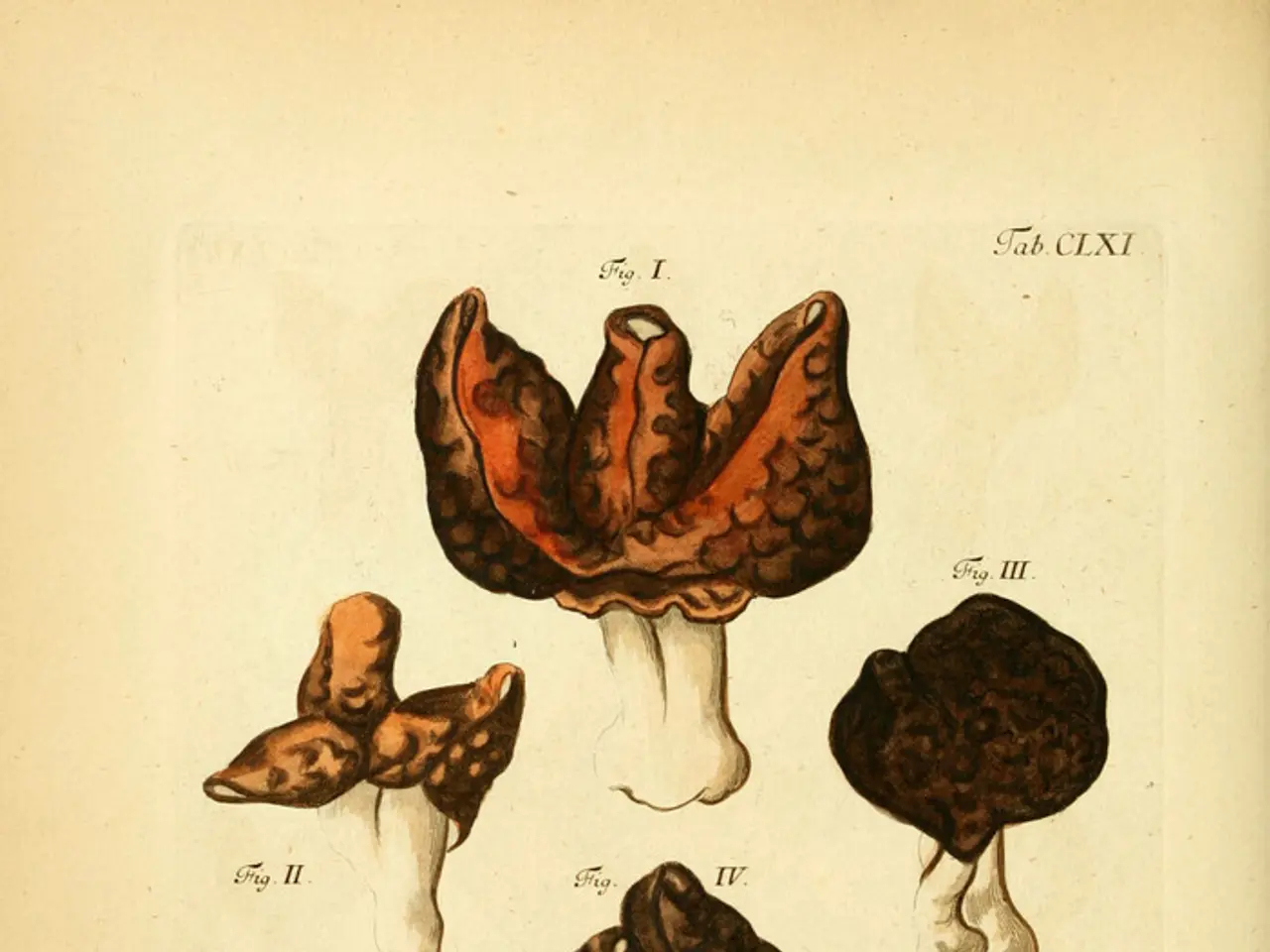Rainbringer Alert for Mushroom Aficionados: Boom in Growth May Lead to Increased Toxicity
In the lush forests of Germany, the summer season has been a bountiful one for mushroom enthusiasts. According to mushroom expert Wolfgang Bivour from Potsdam, there has been an abundance of summer porcini, spruce boletes, morels, various types of boletes, giant puffballs, honey mushrooms, and champignons this year. However, it's important to approach mushroom foraging with caution, as identification can be tricky, and mistakes can be deadly.
Lutz Helbig, a mushroom advisor from the district of Oberspreewald-Lausitz, warns against relying solely on a photo for identification. He explains that while a photo may show the appearance of a mushroom, it does not provide information on smell, taste, or consistency, which are crucial for mushroom determination.
Bivour advises mushroom pickers to take advantage of the current harvest, as a dry and hot August could reduce it. He also cautions against using mushroom identification apps, as they may not provide accurate identification. Instead, Helbig suggests wrapping the mushroom with its roots and bulb in newspaper and taking it to a mushroom consultation if there is any doubt.
The mycelium, the actual mushroom, is always present unless its living conditions are destroyed. However, the body cannot break down the poison from these mushrooms on its own. Helbig warns against eating any mushroom with the slightest doubt, as there are cases of collectors eating poisonous mushrooms every year.
Some of the most common poisonous mushrooms in Germany include the Death Cap (Amanita phalloides), Inocybe lacera, Clitocybe species containing muscarine, and Helvella crispa. The Death Cap mushroom is the most dangerous, causing about 90% of fatal mushroom poisonings in Germany. Its toxins cause delayed symptoms—initially nausea, vomiting, and diarrhea—which appear several hours after ingestion. After 1–2 days, severe liver damage, blood clotting issues, and kidney dysfunction can occur, potentially requiring a liver transplant to save the patient.
Inocybe lacera contains the toxin muscarine, leading to symptoms such as salivation, tearing, urination, defecation, gastrointestinal distress, vomiting, sweating, low blood pressure, and possibly respiratory failure. Symptoms appear soon after ingestion, consistent with muscarinic poisoning.
Muscarine-containing Clitocybe species also cause symptoms of muscarinic poisoning including sweating, vomiting, diarrhea, low blood pressure, abdominal pain, small pupils, runny nose, and watery eyes within 15 minutes to 1 hour after consumption.
Helvella crispa, while sometimes considered edible, may contain monomethylhydrazine, which can cause severe gastrointestinal symptoms and may have long-term neurotoxic effects (possibly linked to diseases like ALS). It should be consumed with caution and only after thorough cooking.
Because of the variability in mushroom toxicity and the risk of confusion, expert identification and precaution are strongly advised when foraging mushrooms in Germany. A mushroom book should be taken along for identification, and beginners are advised to stick to collecting boletes, as they are not deadly poisonous and have a cap, stem, and tubes or sponge on the underside of the cap.
A ventilated basket should be used for mushroom collection, not a plastic box or bag. April is a time for luxury mushrooms of the highest class, such as morels. Mushrooms can be found throughout the year, not just during the fall. However, it's important to remember that immediate medical attention is necessary after consuming a poisonous mushroom, as untreated cases can be fatal.
- In the realm of health-and-wellness and science, it's crucial for mushroom foragers to be aware of the potential danger hidden in the forest, as some mushrooms like the Death Cap (Amanita phalloides) and Inocybe lacera contain deadly toxins.
- In the realms of food-and-drink and home-and-garden, mushrooms like morels, found abundantly in the spring, contribute to a bountiful lifestyle, but caution should be exercised during their foraging due to the risk of misidentification.
- Lifestyle, health-and-wellness, and home-and-garden enthusiasts who engage in mushroom foraging must prioritize expert identification and be equipped with mushroom books for accurate identification, especially when dealing with potentially hazardous species such as Clitocybe species containing muscarine.





